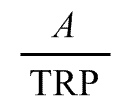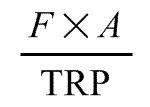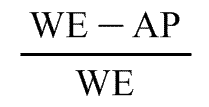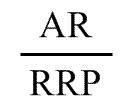- Latest available (Revised)
- Point in Time (01/04/2022)
- Original (As enacted)
Corporation Tax Act 2009
You are here:
- UK Public General Acts
- 2009 c. 4
- Part 3
- Chapter 5
- Tenants under taxed leases
- Show Geographical Extent(e.g. England, Wales, Scotland and Northern Ireland)
- Show Timeline of Changes
Changes over time for: Cross Heading: Tenants under taxed leases
Alternative versions:
- 01/04/2009- Amendment
- 17/07/2013- Amendment
- 01/04/2022
Point in time
Status:
Point in time view as at 01/04/2022.
Changes to legislation:
Corporation Tax Act 2009, Cross Heading: Tenants under taxed leases is up to date with all changes known to be in force on or before 17 November 2024. There are changes that may be brought into force at a future date. Changes that have been made appear in the content and are referenced with annotations.![]()
Changes to Legislation
Changes and effects yet to be applied by the editorial team are only applicable when viewing the latest version or prospective version of legislation. They are therefore not accessible when viewing legislation as at a specific point in time. To view the ‘Changes to Legislation’ information for this provision return to the latest version view using the options provided in the ‘What Version’ box above.
Tenants under taxed leasesU.K.
62Tenants under taxed leases: introductionU.K.
(1)Sections 63 to 67 apply if land used in connection with a trade is subject to a taxed lease.
(2)Section 63 (tenants occupying land for purposes of trade treated as incurring expenses) applies in calculating the profits of a trade carried on by the tenant under the taxed lease for the purpose of making deductions for the expenses of the trade.
(3)But any deduction for an expense under section 63 is subject to the application of any provision of Chapter 4 of this Part.
(4)In this section and sections 63 to 67 the following expressions have the same meaning as in Chapter 4 of Part 4 (profits of property businesses: lease premiums etc)—
“receipt period” (see section 228(6)),
“taxed lease” (see section 227(4)),
“taxed receipt” (see section 227(4)), and
“unreduced amount” (see section 230(2)).
(5)Section 230(3) and (4) (unreduced amount of taxed receipt under section 217 as a result of section 218) applies for the purposes of sections 63 to 67.
(6)In the application of sections 66 and 67 to Scotland—
(a)references to a lease being granted out of a taxed lease are to the grant of a sublease of land subject to the taxed lease, and
(b)references to the lease so granted are to be read as references to the sublease.
63Tenants occupying land for purposes of trade treated as incurring expensesU.K.
(1)The tenant under the taxed lease is treated as incurring an expense of a revenue nature in respect of the land subject to the taxed lease for each qualifying day.
(2)If there is more than one taxed receipt, this section applies separately in relation to each of them.
(3)A day is a “qualifying day”, in relation to a taxed receipt, if it is a day—
(a)that falls within the receipt period of the taxed receipt, and
(b)on which the tenant occupies the whole or part of the land subject to the taxed lease for the purposes of carrying on a trade.
(4)If on the qualifying day the tenant occupies the whole of the land subject to the taxed lease for the purposes of the trade, the amount of the expense for the qualifying day by reference to the taxed receipt is given by the formula—
where—
A is the unreduced amount of the taxed receipt, and
TRP is the number of days in the receipt period of the taxed receipt.
(5)If on the qualifying day the tenant occupies part of the land subject to the taxed lease for the purposes of the trade, the amount of the expense for the qualifying day by reference to the taxed receipt is given by the formula—
where—
F is the fraction of the land that is so occupied calculated on a just and reasonable basis, and
A and TRP have the same meaning as in subsection (4).
[F1(5A)No expense is to be determined under this section by reference to the taxed receipt if section 232(4B) or (4C) applies.]
(6)This section is subject to section 64 (limit on deductions if tenant entitled to mineral extraction allowance).
Textual Amendments
F1S. 63(5A) inserted (with effect in accordance with Sch. 28 para. 8 of the amending Act) by Finance Act 2013 (c. 29), Sch. 28 para. 6
64Limit on deductions if tenant entitled to mineral extraction allowanceU.K.
(1)This section applies if the tenant under the taxed lease has become entitled, in respect of expenditure on the acquisition of an interest in the land subject to the taxed lease, to an allowance for an accounting period under Part 5 of CAA 2001 (mineral extraction allowances) in respect of expenditure falling within section 403 of that Act (qualifying expenditure on acquiring a mineral asset).
(2)If the allowance is in respect of the whole of the expenditure, no deduction is allowed for expenses under section 63 for a qualifying day falling within that or a later accounting period.
(3)If the allowance is in respect of only part of the expenditure (“the allowable part”) the amount of the deduction for expenses under section 63 for a qualifying day falling within that or a later accounting period is calculated by multiplying the amount that, apart from this section, would be the amount of the deduction for the qualifying day by—
where—
WE is the whole of the expenditure, and
AP is the allowable part of the expenditure.
65Tenants dealing with land as property employed for purposes of tradeU.K.
(1)This section applies if the tenant under the taxed lease—
(a)does not occupy the land subject to the taxed lease, or a part of it, but
(b)deals with its interest in the land, or the part of it, as property employed for the purposes of carrying on a trade.
(2)Section 63 applies as if the land or the part of it were occupied by the tenant for the purposes of the trade.
(3)But the tenant is not treated as incurring an expense in respect of the land for a qualifying day as a result of this section so far as the tenant is treated as incurring an expense under section 232 (tenants under taxed leases treated as incurring expenses) in respect of the land for the day in calculating the profits of the tenant's property business.
(4)This section is subject to sections 66 and 67 (restrictions on section 63 expenses where the additional calculation rule is relevant).
66Restrictions on section 63 expenses: lease premium receiptsU.K.
(1)This section applies if a lease has been granted out of the taxed lease and—
(a)in calculating the amount of a receipt of a property business under Chapter 4 of Part 4 (profits of property businesses: lease premiums etc) in respect of the lease, there is a reduction under section 228 (the additional calculation rule) by reference to the taxed receipt, or
(b)in calculating the amount of a receipt of a property business under Chapter 4 of Part 3 of ITTOIA 2005 (profits of property businesses: lease premiums etc) in respect of the lease, there is a reduction under section 288 of that Act (the additional calculation rule) by reference to the taxed receipt.
In this section and section 67 the receipt that is so reduced is referred to as a “”.
(2)Subsections (3) to (5) provide for the application of section 63 as a result of section 65 for a qualifying day that falls within the receipt period of the lease premium receipt.
(3)The tenant under the taxed lease is treated as incurring an expense under section 63 as a result of section 65 for the qualifying day by reference to the taxed receipt only if the daily amount of the taxed receipt exceeds the daily reduction of the lease premium receipt.
(4)If the condition in subsection (3) is met, the amount of that expense for the qualifying day by reference to the taxed receipt is equal to that excess.
(5)If the qualifying day falls within the receipt period of more than one lease premium receipt, the reference in subsection (3) to the daily reduction of the lease premium receipt is to be read as a reference to the total of the daily reductions of each of the lease premium receipts whose receipt period includes the qualifying day.
(6)In this section—
the “daily amount” of the taxed receipt is given by the formula—
where—
A is the unreduced amount of the taxed receipt, and
TRP is the number of days in the receipt period of the taxed receipt, and
the “daily reduction” of a lease premium receipt is given by the formula—
where—
AR is the reduction under section 228 below or section 288 of ITTOIA 2005 by reference to the taxed receipt, and
RRP is the number of days in the receipt period of the lease premium receipt.
(7)In this section references to a reduction under section 228 below or section 288 of ITTOIA 2005 by reference to a taxed receipt have the same meaning as in Chapter 4 of Part 4 (see section 230(6)).
(8)Section 67 explains how this section operates if the lease does not extend to the whole of the premises subject to the taxed lease.
67Restrictions on section 63 expenses: lease of part of premisesU.K.
(1)This section applies if—
(a)section 66 applies, and
(b)the lease granted out of the taxed lease does not extend to the whole of the premises subject to the taxed lease.
(2)Subsections (3) to (5) apply for a qualifying day that falls within the receipt period of the lease premium receipt.
(3)Sections 63, 65 and 66 apply separately in relation to the part of the premises subject to the lease and to the remainder of the premises.
(4)If—
(a)more than one lease that does not extend to the whole of the premises subject to the taxed lease has been granted out of the taxed lease, and
(b)the qualifying day falls within the receipt period of two or more lease premium receipts that relate to different leases,
sections 63, 65 and 66 apply separately in relation to each part of the premises subject to a lease to which such a lease premium receipt relates and to the remainder of the premises.
(5)Where sections 63, 65 and 66 apply in relation to a part of the premises, A becomes the amount calculated by multiplying the unreduced amount of the taxed receipt by the fraction of the premises constituted by the part.
(6)This fraction is calculated on a just and reasonable basis.
Options/Help
Print Options
PrintThe Whole Act
PrintThe Whole Part
PrintThe Whole Chapter
PrintThis Cross Heading only
You have chosen to open The Whole Act
The Whole Act you have selected contains over 200 provisions and might take some time to download. You may also experience some issues with your browser, such as an alert box that a script is taking a long time to run.
Would you like to continue?
You have chosen to open The Whole Act as a PDF
The Whole Act you have selected contains over 200 provisions and might take some time to download.
Would you like to continue?
You have chosen to open The Whole Act without Schedules
The Whole Act without Schedules you have selected contains over 200 provisions and might take some time to download. You may also experience some issues with your browser, such as an alert box that a script is taking a long time to run.
Would you like to continue?
You have chosen to open The Whole Act without Schedules as a PDF
The Whole Act without Schedules you have selected contains over 200 provisions and might take some time to download.
Would you like to continue?
You have chosen to open The Whole Part
The Whole Part you have selected contains over 200 provisions and might take some time to download. You may also experience some issues with your browser, such as an alert box that a script is taking a long time to run.
Would you like to continue?
You have chosen to open The Whole Part as a PDF
The Whole Part you have selected contains over 200 provisions and might take some time to download.
Would you like to continue?
You have chosen to open the Whole Act
The Whole Act you have selected contains over 200 provisions and might take some time to download. You may also experience some issues with your browser, such as an alert box that a script is taking a long time to run.
Would you like to continue?
You have chosen to open the Whole Act without Schedules
The Whole Act without Schedules you have selected contains over 200 provisions and might take some time to download. You may also experience some issues with your browser, such as an alert box that a script is taking a long time to run.
Would you like to continue?
You have chosen to open Schedules only
The Schedules you have selected contains over 200 provisions and might take some time to download. You may also experience some issues with your browser, such as an alert box that a script is taking a long time to run.
Would you like to continue?
Legislation is available in different versions:
Latest Available (revised):The latest available updated version of the legislation incorporating changes made by subsequent legislation and applied by our editorial team. Changes we have not yet applied to the text, can be found in the ‘Changes to Legislation’ area.
Original (As Enacted or Made): The original version of the legislation as it stood when it was enacted or made. No changes have been applied to the text.
Point in Time: This becomes available after navigating to view revised legislation as it stood at a certain point in time via Advanced Features > Show Timeline of Changes or via a point in time advanced search.
See additional information alongside the content
Geographical Extent: Indicates the geographical area that this provision applies to. For further information see ‘Frequently Asked Questions’.
Show Timeline of Changes: See how this legislation has or could change over time. Turning this feature on will show extra navigation options to go to these specific points in time. Return to the latest available version by using the controls above in the What Version box.
Explanatory Notes
Text created by the government department responsible for the subject matter of the Act to explain what the Act sets out to achieve and to make the Act accessible to readers who are not legally qualified. Explanatory Notes were introduced in 1999 and accompany all Public Acts except Appropriation, Consolidated Fund, Finance and Consolidation Acts.
More Resources
Access essential accompanying documents and information for this legislation item from this tab. Dependent on the legislation item being viewed this may include:
- the original print PDF of the as enacted version that was used for the print copy
- lists of changes made by and/or affecting this legislation item
- confers power and blanket amendment details
- all formats of all associated documents
- correction slips
- links to related legislation and further information resources
Timeline of Changes
This timeline shows the different points in time where a change occurred. The dates will coincide with the earliest date on which the change (e.g an insertion, a repeal or a substitution) that was applied came into force. The first date in the timeline will usually be the earliest date when the provision came into force. In some cases the first date is 01/02/1991 (or for Northern Ireland legislation 01/01/2006). This date is our basedate. No versions before this date are available. For further information see the Editorial Practice Guide and Glossary under Help.
More Resources
Use this menu to access essential accompanying documents and information for this legislation item. Dependent on the legislation item being viewed this may include:
- the original print PDF of the as enacted version that was used for the print copy
- correction slips
Click 'View More' or select 'More Resources' tab for additional information including:
- lists of changes made by and/or affecting this legislation item
- confers power and blanket amendment details
- all formats of all associated documents
- links to related legislation and further information resources





